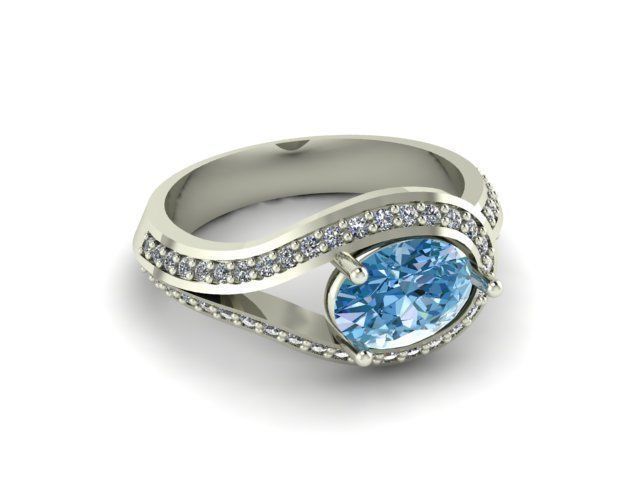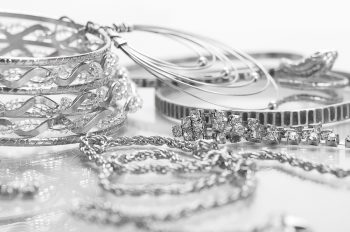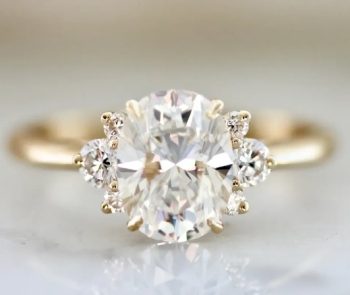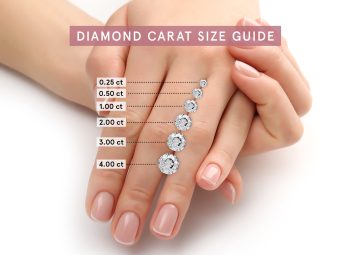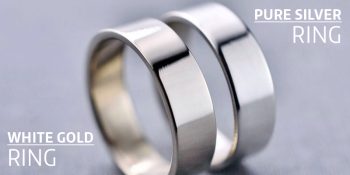When you are ready to propose, you will want to do it in style – and what says “I love you” better than one-of-a-kind Diamond Custom Engagement Rings? If you are thinking about designing your own ring, there are a few things to keep in mind. In this blog, we will guide you to creating the perfect custom diamond engagement ring.
How to Design the Perfect Diamond Custom Engagement Rings
Follow these steps to design the ideal custom diamond engagement ring for your loved one.
1. Decide On The Shape You Want
When choosing the shape of a diamond for your engagement ring, there are several factors to consider. The shape of the diamond refers to its physical appearance, such as round, princess, emerald, or oval. Each shape has its own unique characteristics and appeal. It is important to choose a shape that reflects your personal style and preferences. Additionally, consider the setting and band of the ring, as different shapes may complement certain styles better. Take your time to explore the various options and consult with a reputable jeweler to find the perfect shape for your engagement ring.
The most popular shape for Diamond Custom Engagement Rings is the round diamond. This classic shape is known for its brilliance and sparkle. Round diamonds are versatile and can suit a variety of ring settings and styles. Another popular choice is the princess cut, which is a square shape with pointed corners. Princess cut diamonds are known for their modern and elegant look. If you prefer a more vintage or antique style, consider an emerald cut diamond. This rectangular shape with trimmed corners offers a timeless and sophisticated appeal.
Oval diamonds are another trendy choice for Diamond Custom Engagement Rings. This elongated shape creates the illusion of longer fingers and can give a ring a more delicate and feminine look. Other popular shapes include pear, marquise, asscher, emerald, and cushion cut diamonds, each with their own unique characteristics. Ultimately, the shape of the diamond should be a reflection of your personal style and taste. Consider trying on different shapes and consulting with a jeweler to find the perfect fit for your engagement ring.
2. Educate Yourself A Little On The 4 Cs:
Carat Weight
Diamonds are weighed using a unit of measurement called a carat. One carat is equal to 200 milligrams, or 0.2 grams. This standard unit allows for precise and consistent measurement of diamond weight. The carat weight of a diamond directly affects its value, with larger diamonds typically being more valuable. It is important to note that carat weight alone does not determine a diamond’s quality, as other factors such as cut, color, and clarity also play a significant role. When purchasing a diamond, it is advisable to consider all of these factors in order to make an informed decision.
Cut:
Diamond cut refers to the way a diamond has been shaped and faceted by a skilled diamond cutter. It is one of the most important factors that determine a diamond’s beauty and brilliance. A well-cut diamond reflects and refracts light in a way that maximizes its sparkle and fire.
The cut of a diamond affects its overall appearance and value. A diamond with a poor cut may appear dull and lifeless, while a well-cut diamond will have exceptional brilliance and sparkle. The proportions and angles of the facets are carefully calculated to ensure that light enters the diamond, reflects internally, and then exits through the top, creating a dazzling display of light.
A diamond’s cut is graded on a scale from Excellent to Poor, with Excellent being the highest quality. The better the cut, the more valuable the diamond. When choosing a diamond, it is important to consider the cut in addition to the other 4Cs (carat weight, color, and clarity) to ensure you are getting a diamond that will truly shine.
Clarity:
Diamond clarity refers to the presence of internal or external flaws, known as inclusions and blemishes, respectively. These imperfections can affect the overall appearance and brilliance of a diamond. Clarity is an important factor to consider when purchasing a diamond because it directly impacts its value and beauty. A diamond with higher clarity will have fewer inclusions and blemishes, making it more rare and desirable.
The clarity of a diamond is determined by the Gemological Institute of America (GIA) using a grading scale that ranges from Flawless (no inclusions or blemishes visible under 10x magnification) to Included (inclusions visible to the naked eye). The higher the clarity grade, the more expensive the diamond will be. However, it is important to note that diamonds with lower clarity grades can still be beautiful and offer great value.
When buying a diamond, it is crucial to consider its clarity in relation to your personal preferences and budget. If you prioritize a diamond that is free from visible inclusions and blemishes, you may opt for a higher clarity grade. On the other hand, if you are more concerned with size or color, you may choose a diamond with a lower clarity grade to stay within your budget.
Color:
Diamond color refers to the presence of any hue in a diamond. It is one of the four key factors that determine a diamond’s quality and value, along with carat weight, clarity, and cut. The Gemological Institute of America (GIA) grades diamond color on a scale ranging from D (colorless) to Z (light yellow or brown). The closer a diamond is to colorless, the higher its value and desirability.
The importance of diamond color lies in its impact on a diamond’s appearance. A colorless diamond allows more light to pass through, resulting in greater brilliance and sparkle. On the other hand, diamonds with noticeable color can appear dull or less vibrant. The goal is to find a balance between color and budget, as colorless diamonds are generally more expensive.
When choosing a diamond, it is crucial to consider personal preferences, budget, and the desired diamond setting. Some individuals may prioritize a colorless diamond for its timeless elegance, while others may prefer a slightly colored diamond for its unique character. Ultimately, understanding diamond color and its significance empowers buyers to make informed decisions and find the perfect diamond that suits their individual style and budget.
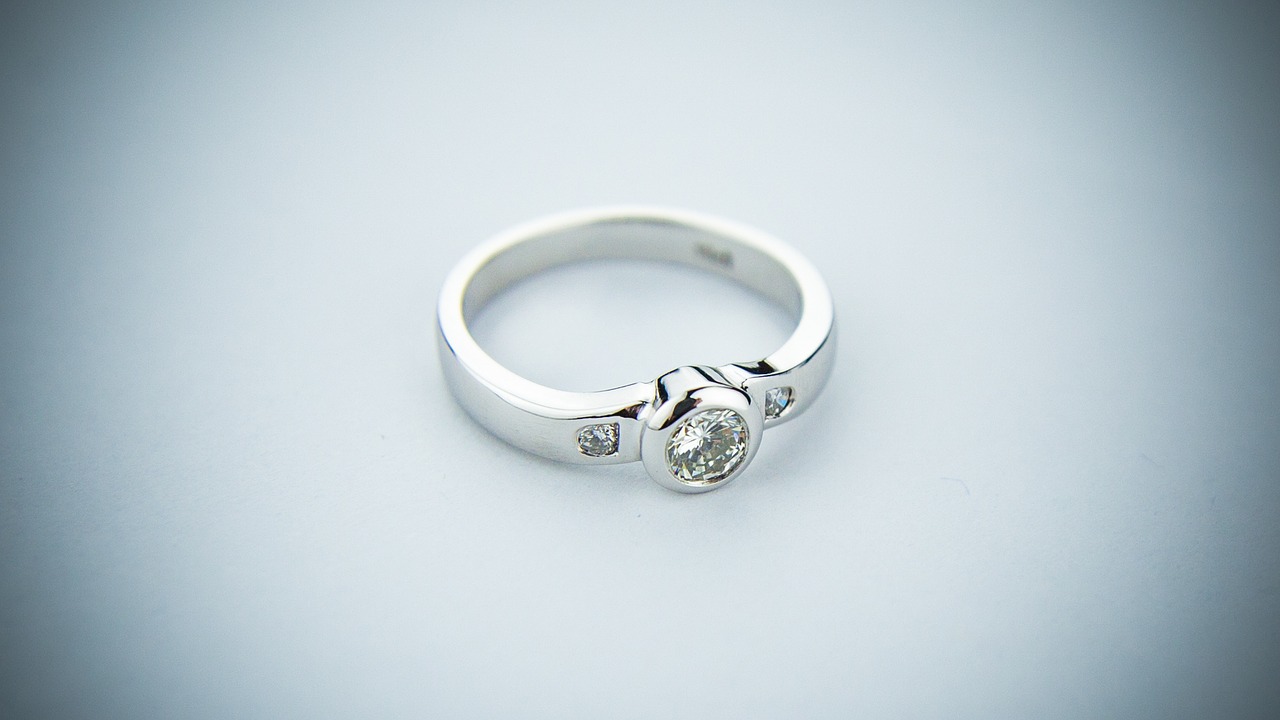
2. Select the Metal For The Ring
The type of metal you choose for the band of your custom engagement ring will also be important. The most popular types of metal include:
- Gold: Gold is a classic choice for an engagement ring, and comes in a variety of colors, including yellow, white, and rose gold.
- Platinum: Platinum is a strong and durable metal, and is a good choice if your loved one is active. We can offer you great custom platinum engagement rings.
- Palladium: Palladium is similar to platinum, but is more affordable.
- Silver: Silver is a less expensive option, but can tarnish over time.
3. Research Types & Styles Of Settings
When it comes to engagement ring shopping, it’s important to research the different types and styles of settings available. This will ensure that you find the perfect ring that matches your partner’s style and preferences. There are several factors to consider when researching settings, such as the durability, aesthetics, and maintenance requirements. By taking the time to educate yourself on the various options, you can make a well-informed decision and find a ring that your partner will cherish for a lifetime.
One popular type of setting is the prong setting, which uses small metal claws to hold the diamond or gemstone in place. This setting allows for maximum light exposure, resulting in a brilliant and sparkling appearance. Another option is the bezel setting, where the diamond or gemstone is surrounded by a metal rim. This setting offers excellent protection and is a great choice for those with an active lifestyle. Additionally, there are settings like the channel setting, pave setting, and halo setting, each with its own unique characteristics and advantages.
When researching settings, it’s also important to consider the style that best suits your partner’s taste. Classic and timeless settings like the solitaire or three-stone setting are always a safe choice. For a more modern and unique look, you may want to explore settings with intricate details or unconventional designs. It’s also worth considering the metal type for the setting, such as platinum, white gold, yellow gold, or rose gold, as this can greatly impact the overall appearance of the ring.
4. Decide If You Want A Lab Grown Diamond Or A Natural One
When it comes to diamonds, there are two main options to consider: lab diamonds and natural diamonds. Lab diamonds are created in a controlled environment, replicating the natural process that occurs deep within the Earth. On the other hand, natural diamonds are formed over millions of years under intense pressure and heat. Both options have their own unique characteristics and benefits.
Lab diamonds offer several advantages. Firstly, they are more affordable compared to natural diamonds, making them a popular choice for those on a budget. Additionally, lab diamonds are ethically sourced, as they do not require mining and do not contribute to environmental damage. They are also free from any conflict or unethical practices associated with the diamond industry.
Natural diamonds, on the other hand, have their own appeal. They are cherished for their rarity and unique beauty. Natural diamonds have a timeless quality that cannot be replicated. They also hold sentimental value, as they are often passed down through generations. Furthermore, natural diamonds have a long-standing reputation and are seen as a symbol of luxury and status.
Ultimately, the choice between lab diamonds and natural diamonds depends on personal preferences and priorities. Lab diamonds offer affordability and ethical sourcing, while natural diamonds provide a sense of tradition and prestige. Whether you choose a lab diamond or a natural diamond, both options are sure to sparkle and captivate.
5. Consider Any Extra Touches You Might Want
Extra touches can really make a custom engagement ring stand out. You may want to consider adding:
- A Diamond Ring Enhancer: A diamond band can add extra sparkle and glamour to Diamond Custom Engagement Rings.
- Gemstones: Gemstones can add color and interest to an engagement ring. Popular gemstones include rubies, sapphires, and emeralds.
- A Personalized Message: Adding a personal message engraved on the the inside of the ring is a special way to make it even more unique.
With the help of a skilled jeweler, you can easily design the perfect Diamond Custom Engagement Rings for your loved one. By taking the time to consider the size, shape, quality, and setting of the diamond, you can create a ring that is truly unique and beautiful. Valeria Custom Jewelry is the perfect place to buy custom engagement rings. Our skilled jewelers can help you design the perfect ring for your loved one. We offer a wide variety of diamond shapes, sizes, and settings to choose from, so you can create a ring that is truly unique and special. Contact us today to learn more about our custom engagement ring services.
Click here to see all of our custom engagement rings. If you don’t see anything you like or can modify to your taste, send us your idea. We will see what we can do for you.
